
Ballroom dance is a set of partner dances, which are enjoyed both socially and competitively around the world, mostly because of its performance and entertainment aspects. Ballroom dancing is also widely enjoyed on stage, film, and television.

The waltz, meaning "to roll or revolve") is a ballroom and folk dance, normally in triple, performed primarily in closed position.

Viennese waltz is a genre of ballroom dance. At least four different meanings are recognized. In the historically first sense, the name may refer to several versions of the waltz, including the earliest waltzes done in ballroom dancing, danced to the music of Viennese waltz.
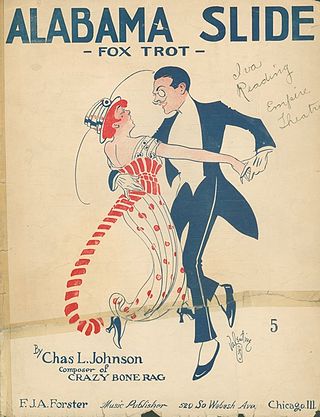
The foxtrot is a smooth, progressive dance characterized by long, continuous flowing movements across the dance floor. It is danced to big band music. The dance is similar in its look to waltz, although the rhythm is in a 4
4 time signature instead of 3
4. Developed in the 1910s, the foxtrot reached its height of popularity in the 1930s and remains practiced today.

A redowa is a dance of Czech origin with turning, leaping waltz steps that was popular in European ballrooms.
This is a list of dance terms that are not names of dances or types of dances. See List of dances and List of dance style categories for those.

The quickstep is a light-hearted dance of the standard ballroom dances. The movement of the dance is fast and powerfully flowing and sprinkled with syncopations. The upbeat melodies that quickstep is danced to make it suitable for both formal and informal events. Quickstep was developed in the 1920s in New York City and was first danced by Black Americans. Its origins are in combination of slow foxtrot combined with the Charleston, a dance which was one of the precursors to what today is called swing dancing.
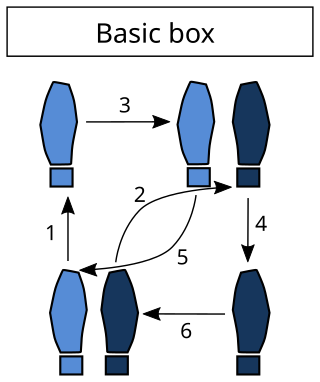
Box step is a basic dance step named after the pattern it creates on the floor, which is that of a square or box. It is used in a number of American Style ballroom dances: rumba, waltz, bronze-level foxtrot. While it can be performed individually, it is usually done with a partner. This is the most common dance step in the waltz. In international standard dance competition, there is a similar step called closed change.
The country/western two-step, often called the Texas two-step or simply the two-step, is a country/western dance usually danced to country music in common time. "Traditional [Texas] two-step developed, my theory goes, because it is suited to fiddle and guitar music played two-four time with a firm beat [found in country music]. One-two, one-two, slide-shuffle. The two-step is related to the polka, the Texas waltz, and the jitterbug.
The Texas two-step is the same step known to ballroom dancers as the international fox-trot. Except for the one-step, which is just that, most Texas dances are variations of a two-step, also called a half-step, which is simply a step-close-step. The Texas two-step is generally done with two long steps and a step-close-step to two-four time. Speeded up, it's a shuffle or double shuffle, but still a two-step.

The chassé is a dance step used in many dances in many variations. All variations are triple-step patterns of gliding character in a "step-together-step" pattern. The word came from ballet terminology.
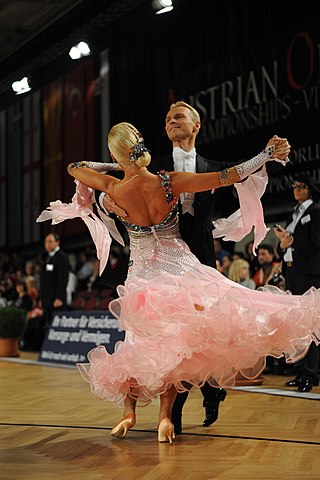
Waltz is one of the five dances in the Standard category of the International Style ballroom dances. It was previously referred to as slow waltz or English waltz.
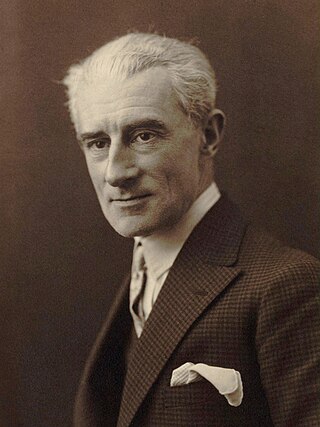
La valse, poème chorégraphique pour orchestre, is a work written by Maurice Ravel between February 1919 and 1920; it was first performed on 12 December 1920 in Paris. It was conceived as a ballet but is now more often heard as a concert work.

Contra body movement is used in ballroom dances, such as waltz, foxtrot, tango, and quickstep. It comprises turning the body against the movement of the legs: either moving forward with the right foot and the left hip and shoulder, or vice versa.
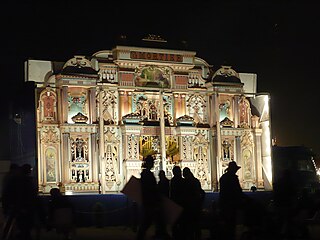
A dance organ is a French mechanical organ designed to be used in a dance hall or ballroom. Originated and popularized in Paris, it is intended for use indoors as dance organs tend to be quieter than the similar fairground organ.
Valse à deux temps, waltz à deux temps, also Valse à deux pas or Valse Russe was a waltz of Russian origin introduced in France in the mid-19th century.
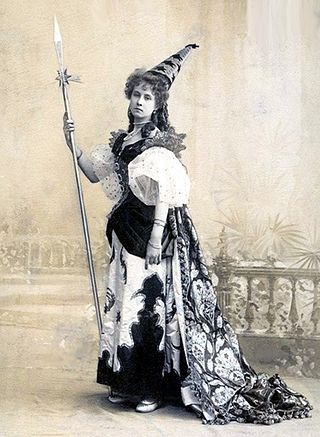
Barbe-bleue is a ballet-féerie in three acts and seven scenes, originally choreographed by Marius Petipa to the music of Pyotr Schenk. The libretto was created by the author and dramatist Countess Lydia Pashkova from the fairy tale Bluebeard by Charles Perrault. The ballet was first presented by the Imperial Ballet on December 20 [O.S. December 8] 1896 at the Imperial Mariinsky Theatre in St. Petersburg, Russia, the first performance being a benefit in honor of Marius Petipa's fiftieth anniversary in service to the St. Petersburg Imperial Theatres.

The third season of the French version of Dancing with the Stars debuted on TF1 on October 6, 2012. 10 celebrities were paired with 10 professional ballroom dancers. Sandrine Quétier and Vincent Cerutti return as the hosts for this season.

The fourth season of the French version of Dancing with the Stars premiered on TF1 on September 28, 2013. Like the previous season, 10 celebrities were paired with 10 professional ballroom dancers. Sandrine Quétier and Vincent Cerutti return as the hosts for this season.

The fifth season of the French version of Dancing with the Stars premiered on TF1 on September 27, 2014, almost one year to the day after the fourth season. This time, 11 celebrities were paired with 11 professional ballroom dancers, more than the 10 of the previous two seasons. Sandrine Quétier and Vincent Cerutti return as the hosts for this season, while second season winner Shy'm left her judging chair after two years, being replaced by first season winner M. Pokora.
















